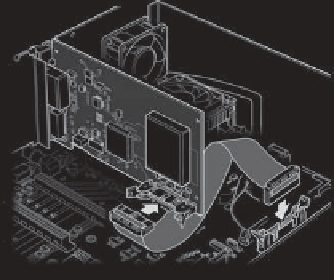Graphics Reference
In-Depth Information
Figure 34.1: Various styles of art and illustration (top to bottom): photorealism (Harmen
Steenwyck, Still Life with Fruit and Dead Fowl, 1630), impressionism (Monet, Impression,
Sunrise, 1872), and technical illustration.
chapter discusses several techniques that fit the “expressive” mold. Broadly, work
that focuses on abstraction and intent falls in the category of “illustration,” while
“fine art” may include work that emphasizes style, message, or media as well.
Thus, much work in scientific visualization involves abstraction and intent; an
illustration tries to convey the flow of blood, not the color of the cells nor the flow
of any one particular cell. Herman and Duke [HD01] make a strong case for such
use of expressive rendering in visualization applications.
There is naturally a certain overlap between photorealistic solutions to the
rendering equation and artistic technique. Illustration topics, for instance, teach
students about various kinds of shadows (see Figure 34.2), each of which corre-
sponds to some part of the solution to the rendering equation.
Direct shadows,
for instance, correspond to the first visibility term in the series expansion solution
of the rendering equation, while
curvature shadows
correspond to the first bidi-
rectional reflectance distribution function (BRDF) term (and subsequent ones, to a





